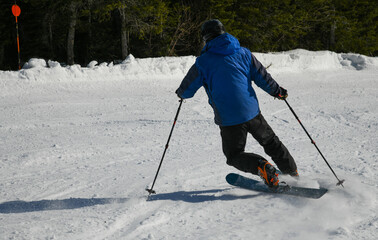Hampton Barringer Luzak is a multidisciplinary professional with experience in various fields including marketing, media, and entrepreneurship. An avid winter sports participant, Hampton Luzak spends her free time participating in several winter sports including snowshoeing and skiing.
Telemark skiing is a cross-country skiing style that incorporates characteristics from alpine and Nordic skiing. Telemark skis have bindings that allow skiers to leave their heels and allow them to ride uphill and downhill while adopting a turning style that involves moving in a squatting motion.
Telemark skiing is perceived as more challenging than alpine skiing. However, with the right amount of training and practice, it is not. The only additional skill needed by skiers is getting used to having their heels free. Compared to alpine skiing, the biggest difference is the telemark turn, which involves skiers distributing body weight evenly across both skis, bending both knees, and moving the outside (downhill) ski ahead while the inside (uphill) ski trails behind as their back heel lifts.
Telemark skiing needs basic equipment such as telemark boots, special bindings, climbing skins, and proper skis. Skis used for telemarking are wider as they have better uplift of the ski in fresh snow. Bindings sized at 75 millimeters allow for easier telemarking. The skis are required to be only as light as 1,500 grams, while the binding design meant for telemark skiing is required to be stable and solid.

No comments:
Post a Comment